A roadmap to your metalanguage practice: The Juicy Sentence Protocol
Why language?
For over a decade, teachers and parents are told to prepare their students, and English Learners (ELs) specifically, for ‘instructional shifts’ brought on by a wave of core standards. If lucky, teachers participate in workshops to help them understand key concepts like text complexity and evidence-based classroom discussions. While these trainings are extensive in scope and purpose, they presume teachers possess a working knowledge of foundational linguistic concepts to bring this work back to their classroom. Without curated and ongoing support to explore the features of academic language, these learning expeditions will garner little change in teacher practice. Given the current teaching climate where remote learning is poised to widen the achievement gap between well-resourced families and at-risk communities, now is the time to marshal support for ELs’ engagement with academic literacies.
This teacher practice brief will introduce teachers to concepts about academic language features and the metalinguistic tools of analysis that can bridge the gap between work on text complexity and the goal of teaching ABOUT language to a roomful of ELs. Some years ago, Dr. Lily Wong Filmore proposed an instructional strategy where teachers select a complex disciplinary text with which to lead students in a close reading. The goal of these metalinguistic conversations is twofold: reading comprehension (understanding what the text says) and building linguistic acumen (learning how the language choices construe meaning). There are many pathways to enact this protocol; today I offer one approach that has worked well with my pre-service teachers.
Are you up to the task?
Asking teachers to suddenly add metalinguistic conversations to their practice sets off anxiety alarms: you mean all that sentence diagramming I hated doing in middle school?
Well, not exactly. Read through this graphic to determine how comfortable and confident you feel swimming in the waters of language-teaching.
The tools of analysis:
Any text is written to convey certain messages, to reach certain audiences and to invoke certain emotions. This is what I refer to as “language doing work”. This work appears as nested layers of meaning: context, discourse, sentence and words or phrases. To analyze a text, you will work within each of these layers of meaning in a dynamic and iterative manner. Although you will plan a series of prompts and anticipate responses, the conversation will flow where it needs to. You will prepare your juicy sentence discussion by planning more prompts than is needed for about 20 minutes of discussion.
Use these planning prompts to get you started:
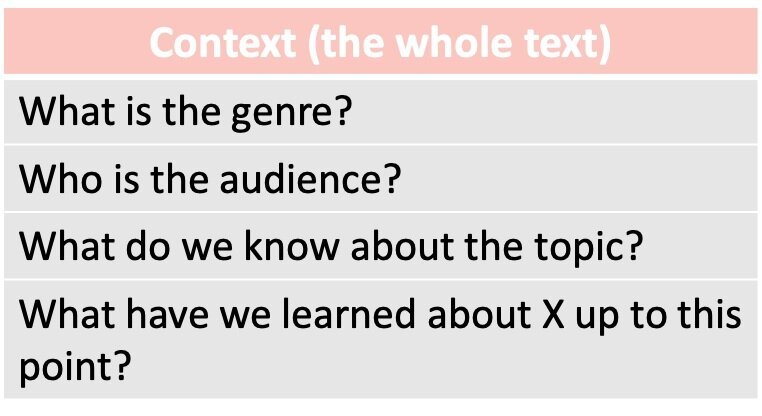
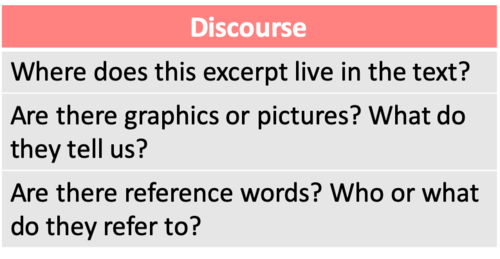
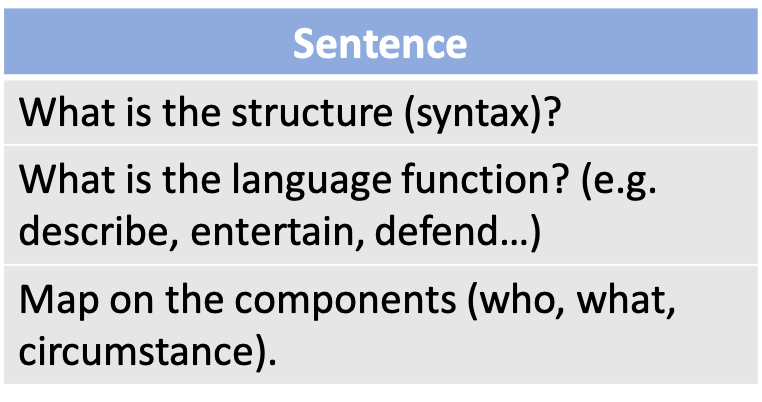
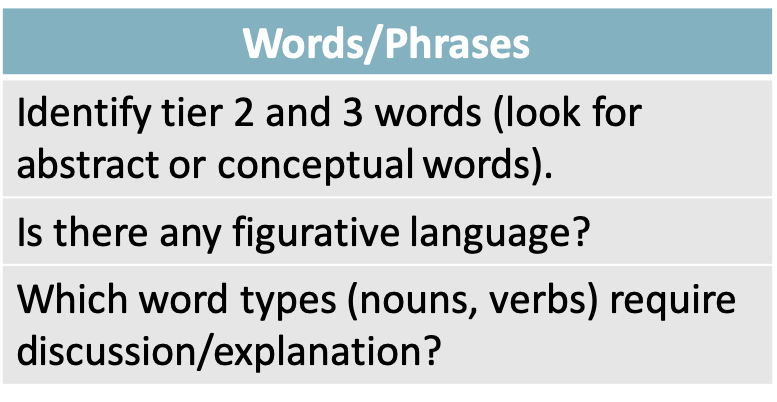
This word bank is another resource to jumpstart your planning:
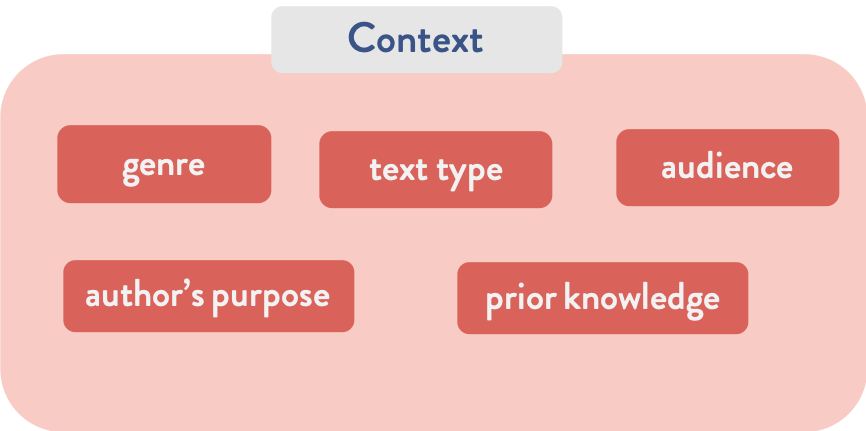
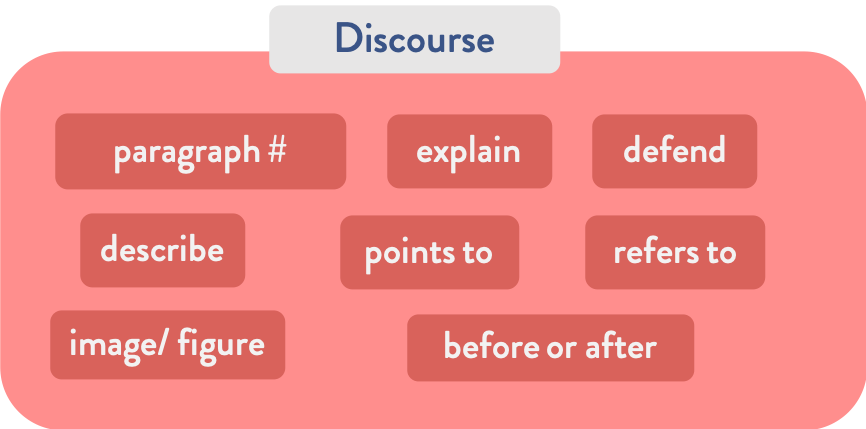

Got it. Now what?
This post has oriented you to the tools and concepts to launch a Juicy Sentence Protocol in your practice. Click on the button below to read through a brief classroom transcript of what this conversation sounds like.


